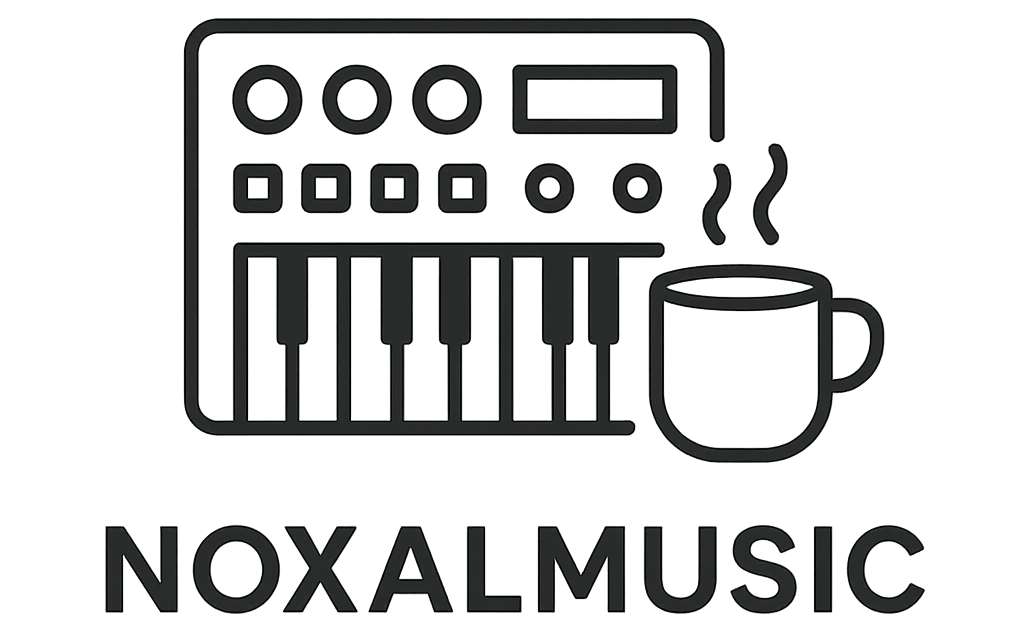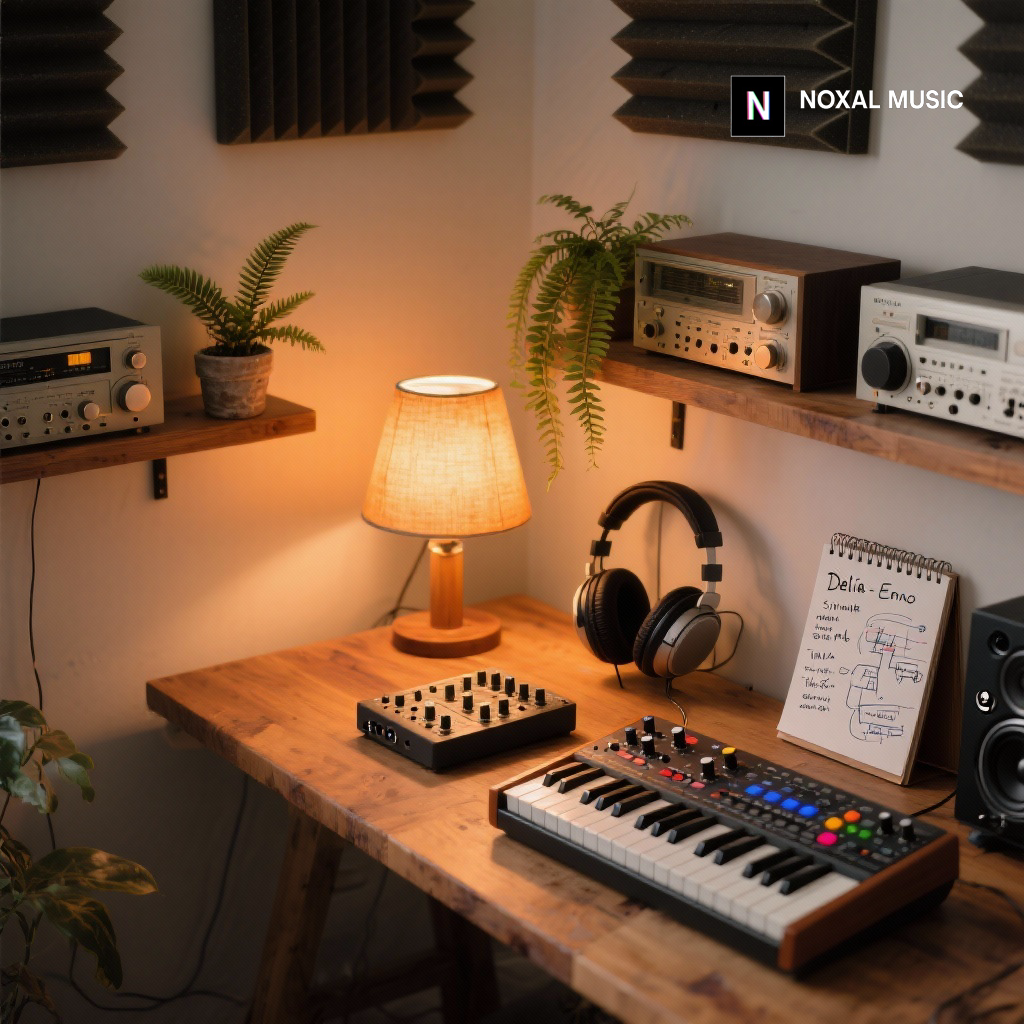Unlock the secrets of sound design with this beginner’s guide! Discover the fundamental building blocks of creating unique sounds for your music production journey. From waveforms to effects, this article will equip you with essential techniques to unleash your creativity and find your sonic signature.
A comprehensive dive awaits into the world of sound design tricks for beginners. Don’t miss out on invaluable tips; Join our newsletter to stay updated!
- Expand your sound palette with fundamental sound design techniques.
- Understand waveforms and how they impact your sound.
- Learn layering and effects to add depth to your music.
- Experiment to discover your unique sonic identity.
Estimated Reading Time: 8 minutes
Table of Contents
- The Alchemy of Sound: Why Sound Design Matters for Beginners in Music Production
- Your First Brushstrokes: Essential Sound Design Tricks for Beginners
- Echoes of the Future: Learning from the Pioneers of Sound
- Hands-On: Applying Beginner Sound Design Tricks in Your DAW
- Beyond the Tutorials: Embracing the Spirit of Experimentation
- Conclusion: Your Sonic Signature Awaits
- FAQ
The Alchemy of Sound: Why Sound Design Matters for Beginners in Music Production
When I first started producing, I relied heavily on factory presets. And there’s absolutely nothing wrong with that! Presets are fantastic starting points, incredible demonstrations of what a synthesizer or VST plugin can do. But after a while, I noticed something: all my tracks, despite different melodies or rhythms, started to sound… similar. They lacked a distinctive character, a sonic fingerprint that screamed “me.” This is where the profound importance of sound design truly hit me.
Sound design, at its core, is the art and science of creating or modifying sounds. For beginners in music production, it’s not just about making weird noises; it’s about learning the language of synthesis, understanding how waveforms, filters, and effects interact to create everything from a booming bassline to an ethereal pad, from a sharp percussive hit to a swirling ambient texture. It’s about moving beyond the “what” of a sound (a piano, a synth bass) to the “how” (how that piano was recorded, how that synth bass was sculpted).
The biggest benefit for new producers? It expands your sound palette exponentially. Instead of being limited by the sounds a software developer decided to include, you gain the power to craft exactly what’s in your head, or even stumble upon something entirely new and inspiring. This freedom doesn’t just make your tracks more unique; it deepens your understanding of music itself, allowing you to perceive texture and timbre with a newfound clarity. It’s a journey of discovery that, in my experience, makes music production infinitely more rewarding.
Your First Brushstrokes: Essential Sound Design Tricks for Beginners
Let’s get practical. You don’t need expensive hardware or arcane knowledge to start designing sounds. Your DAW (Digital Audio Workstation) likely has built-in synths and effects that are more than capable. The key is to understand the fundamental building blocks.
1. Waving Hello to Waveforms and ADSR
Every sound, whether it’s a pure tone or a complex texture, starts with a waveform. Think of waveforms as the raw clay from which you sculpt. Most synthesizers, hardware or software, offer a few basic types:
- Sine Wave: The purest, most fundamental sound.
- Sawtooth Wave: Rich in harmonics, giving it a bright, buzzy, and full sound.
- Square Wave: Characterized by a hollow, woody sound.
- Triangle Wave: Brighter than a sine but softer than a square.
Once you pick a waveform, the next step is shaping its dynamics over time – its ADSR envelope. This stands for:
- Attack: How quickly the sound reaches its peak volume after a note is played.
- Decay: How quickly the sound falls from its peak volume to the sustain level.
- Sustain: The level at which the sound holds as long as the note is held down.
- Release: How long it takes for the sound to fade to silence after the note is released.
I remember my first time really messing with ADSR on a simple synth VST. It was like magic! I could take a sharp, punchy sound and turn it into a soft, airy pad just by slowing down the attack and extending the release. It opened my eyes to how much sonic character you could imbue into a sound with just four parameters.
Actionable Advice: Load up a simple synth in your DAW and start with a sine wave. Play with the ADSR settings to make variation in sound textures.
2. Filtering: Sculpting with Frequency
If waveforms are your raw material, filters are your chisels. They allow you to remove or emphasize specific frequency ranges, fundamentally altering a sound’s timbre. The two most common types are:
- Low-Pass Filter (LPF): Allows low frequencies to pass through while cutting off high frequencies.
- High-Pass Filter (HPF): Allows high frequencies to pass while cutting off lows.
- Band-Pass Filter (BPF): Allows a specific range of frequencies to pass while cutting both highs and lows.
Most filters also have a Resonance control that boosts frequencies right at the filter’s “cutoff point.”
For me, discovering the power of a good filter sweep was a game-changer. That moment when you slowly open up a low-pass filter on a dark synth pad, and the sound gradually brightens and blossoms – it’s pure sonic satisfaction!
Actionable Advice: Take that saw wave lead you made earlier and apply a low-pass filter. Slowly turn up the cutoff and experiment with resonance.
3. The Power of Effects Chains: Adding Depth, Grit, and Movement
Effects are the spices in your sonic curry. They can add space, texture, aggression, or subtle shimmer. Here are some crucial effects for beginners:
- Delay & Reverb: Add spatial depth.
- Distortion & Saturation: Introduce warmth and aggression.
- Chorus & Flanger: Add width and a shimmering quality.
Actionable Advice: Take a simple arpeggio from your synth; add a delay, reverb, and then a chorus effect to add depth.
4. Layering Sounds: The Sum is Greater Than Its Parts
Layering involves playing two or more different sounds simultaneously to create a richer sound. Example: Layer a deep sine wave with a filtered saw wave for a more complex bass sound.
I often find myself layering a short, sharp synth hit with a longer, reverbed sound.
Actionable Advice: Try layering a kick drum sound with a distorted synth pluck for more character.
5. Starting with Presets, Ending with YOU
Relying on presets isn’t wrong! Actionable Adice: Load a preset, dissect it, and modify one parameter at a time to understand sound design principles.
Echoes of the Future: Learning from the Pioneers of Sound
It’s vital to connect with the heritage of electronic music. Consider Delia Derbyshire, who crafted sound with groundbreaking technologies. Or Wendy Carlos, who showcased the Moog synthesizer. They pushed boundaries, and their spirit lives on in our experimentations.
Hands-On: Applying Beginner Sound Design Tricks in Your DAW
Enough theory! Here are quick applications of these tricks:
- Transforming a Basic Pad: Use a Saw wave, apply a slow attack, and add a chorus effect.
- Making a Simple Bassline More Aggressive: Use a Saw wave, add saturation, and apply an automated filter.
- Creating Ethereal Textures: Use white noise, apply a high-pass filter, and layer with reverbed sine wave.
Actionable Advice: Pick one scenario and recreate it with your built-in instruments and effects.
Beyond the Tutorials: Embracing the Spirit of Experimentation
The most profound sound design tricks aren’t found in a list; they’re discovered through relentless experimentation. I’ve always found that the most interesting sounds emerge when I stop trying to achieve a specific result and just let my ears guide me.
Analyze your favorite tracks for inspiration and to enhance your own work.
Conclusion: Your Sonic Signature Awaits
Stepping into the world of sound design can feel daunting, but it’s rewarding. By understanding waveform basics, ADSR envelopes, filters, and effects, you’ll develop a skill set that empowers you to create uniquely your own sounds.
Your sound palette awaits, and your unique sonic signature is just experiments away!
FAQ
What is sound design?
Sound design is the art and science of creating or modifying sounds for various applications, especially in music production.
Do I need expensive gear for sound design?
No! You can start with built-in synths and effects in your DAW.
Can I learn sound design through experimenting?
Absolutely! Experimentation is key. Play with sounds to find your unique identity.
So, get ready to turn those knobs and plug in! Remember, the only thing standing between you and sonic perfection is a bit of trial and error. Happy sound sculpting, and may your synth dreams be ever in tune! After all, who doesn’t want to produce music that makes you feel like a sonic wizard—or at least a wizard on a really budget-friendly synth?

